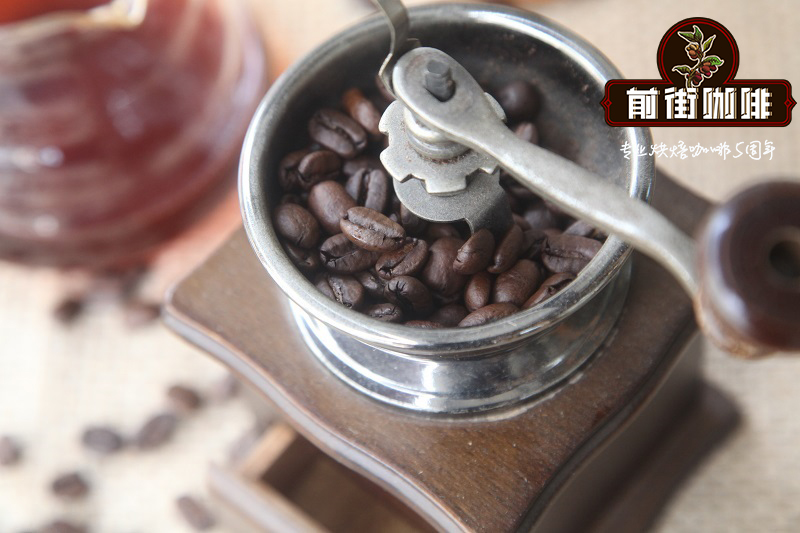Which coffee beans are suitable for mocha _ mocha coffee bean picture analysis _ caffeine content of mocha coffee

Professional coffee knowledge exchange more coffee bean information please follow the coffee workshop (Wechat official account cafe_style)
Yemeni mocha coffee bean Sanani
Yemeni Moka Mountain Nani Sanani
When it comes to coffee beans in Yemen and Ethiopia, many people think of "mocha"
(Mocca,Mocha,Moka,Mokha,Mokka... Anything you can see
The spelling sound of mocha actually refers to almost the same thing. The following is replaced by Mocha)
In modern times in the 21 th century, when it comes to mocha coffee, many people recognize it as "coffee with chocolate."
This is a coffee practice, but the word mocha Mocha originally refers to the place of origin of coffee.
The export port of Yemeni coffee beans. After 500 years, the port of Mocha has of course been destroyed and is no longer in use.
It has been replaced by a modern new port, but the word Mocha lasts forever.
It has been handed down in an ancient manner.
Coffee beans exported from Yemen 500 years ago were extremely popular when they were shipped to Europe.
On the other hand, the production of coffee beans in Yemen is very small, so it is also dried.
Ethiopia, across the bay from Yemen, is also exported through the port of Mocha.
That's why "mocha beans" is mentioned today.
People often think of coffee beans in Yemen and Ethiopia.
In fact, the beans that first spread to the West were Yemeni beans.
The first place to find coffee beans is Ethiopia. Both were later referred to as mocha coffee beans.
But in fact, the taste after the cup test is obviously different (no one is better or worse, depending on personal preference).
Ethiopian coffee is not mentioned here.
Yemen is one of the most unique and acclaimed coffee in the coffee world.
It's generally called wild, primitive, earthy, complex, spicy, and chocolate.
That's why coffee with chocolate is called mocha.
Mocha Mocha represents three layers of meaning:
1. Port of Mocha; 2. Coffee from Yemen and Ethiopia; 3. Coffee with chocolate.
There are many coffee producing areas in Yemen, including Sanani, Mattari, Hirazi, Dhamari, Rimy. Wait.
Beans from each producing area have their own characteristics, and the taste is slightly different.
But the same is that planting and treatment methods are not much better than they were 500 years ago.
Wild (so natural, there will be no pesticides), artificial harvest, not much planting land (and therefore small quantity)
Drying treatment (so the appearance of beans is uglier than washed beans, uneven particle size), stone mortar shelling (so there are more broken beans).
As the first coffee exporter, after 500 years of development
Yemen ranks 46th in coffee exports in the world.
(laugh, it's really behind. ~ it may change before and after, but it doesn't change much.)
Sanani is planted in the highlands around the Yemeni capital Sana.
Compared with other Yemeni beans, it is famous for its aroma and balanced taste.
Sanani is elegant. With a hint of tobacco and chocolate
The acidity of the bean is lower than that of other beans, but the aroma (especially fruit) is stronger.
The texture of red wine with a lingering finish. It is suitable for both shallow and deep baking, which is quite recommended.
Yemeni mocha coffee bean brand recommendation
The Yemeni mocha beans baked in Qianjie Coffee are fully guaranteed in terms of brand and quality. And more importantly, the performance-to-price ratio is extremely high, each pack of 227 grams, the price is only about 85 yuan. According to the calculation of 15 grams of coffee beans per cup of coffee, a bag of coffee can make 15 cups of coffee, which costs only about 6 yuan per cup, which is recommended by conscience compared to the price of tens of yuan a cup sold in a coffee shop.
Qianjie coffee: Guangzhou bakery, the store is small but a variety of beans, you can find a variety of unknown beans, but also provide online store services. Https://shop104210103.taobao.com
Important Notice :
前街咖啡 FrontStreet Coffee has moved to new addredd:
FrontStreet Coffee Address: 315,Donghua East Road,GuangZhou
Tel:020 38364473
- Prev

Yemen Mocha also how to brew mocha coffee beans _ video of how to drink mocha coffee beans
Professional coffee knowledge exchange more coffee bean information please follow the coffee workshop (Wechat official account cafe_style) for lovers who dabble in coffee slightly, when it comes to Yemeni coffee, it is easy to associate mocha coffee beans. Yemen has a long history of growing coffee. By the early 17th century, Yemeni coffee beans began to be exported to Europe from the southwestern port of Mocha, and Europeans began to export
- Next

The story of the origin of Mexican coffee beans. Is Mexican coffee light? what is the price of Mexican coffee?
For more information on coffee beans, please follow the coffee workshop (Wechat official account cafe_style) Mexican coffee beans are said to have been transplanted to Mexico from the West Indies by a Spaniard in the late 18th century. Mexican coffee beans with excellent performance, taste comfortable, mellow, moderately acidic, mild and meticulous, pleasant aroma. There are 12 masters in Mexico.
Related
- Detailed explanation of Jadeite planting Land in Panamanian Jadeite Manor introduction to the grading system of Jadeite competitive bidding, Red bid, Green bid and Rose Summer
- Story of Coffee planting in Brenka region of Costa Rica Stonehenge Manor anaerobic heavy honey treatment of flavor mouth
- What's on the barrel of Blue Mountain Coffee beans?
- Can American coffee also pull flowers? How to use hot American style to pull out a good-looking pattern?
- Can you make a cold extract with coffee beans? What is the right proportion for cold-extracted coffee formula?
- Indonesian PWN Gold Mandrine Coffee Origin Features Flavor How to Chong? Mandolin coffee is American.
- A brief introduction to the flavor characteristics of Brazilian yellow bourbon coffee beans
- What is the effect of different water quality on the flavor of cold-extracted coffee? What kind of water is best for brewing coffee?
- Why do you think of Rose Summer whenever you mention Panamanian coffee?
- Introduction to the characteristics of authentic blue mountain coffee bean producing areas? What is the CIB Coffee Authority in Jamaica?

